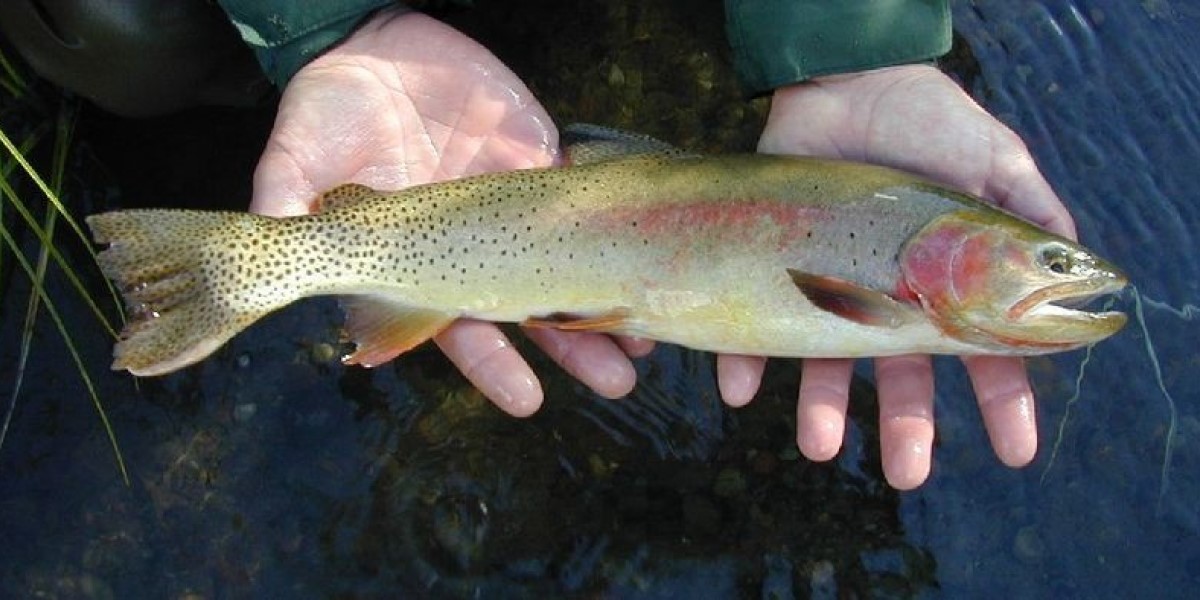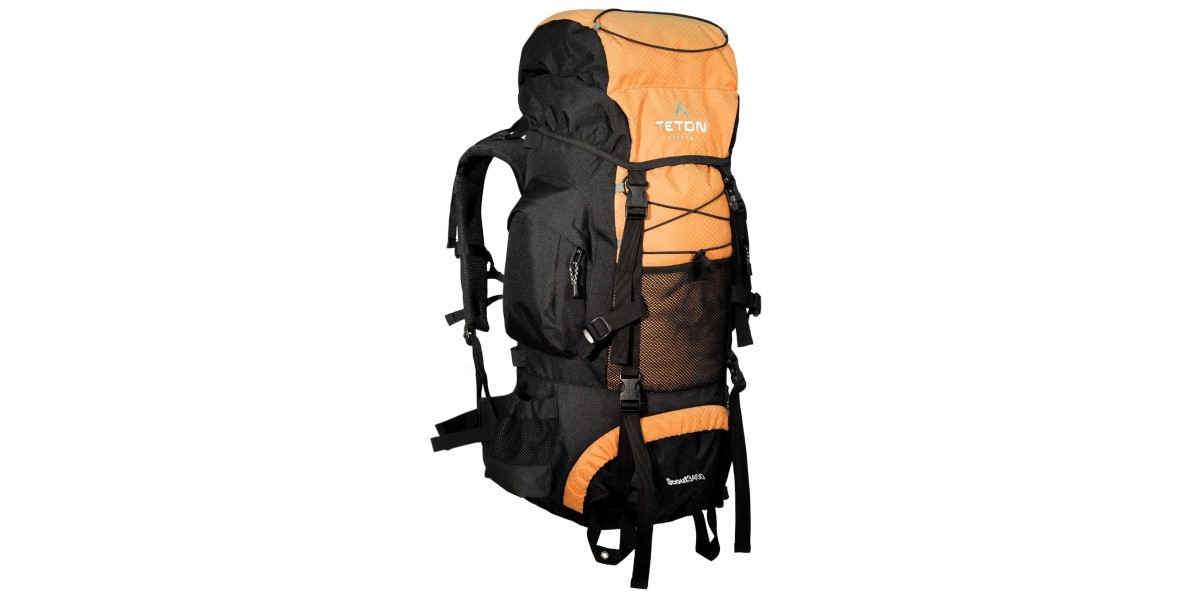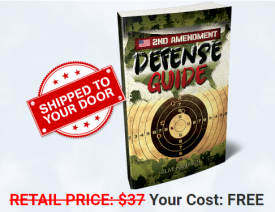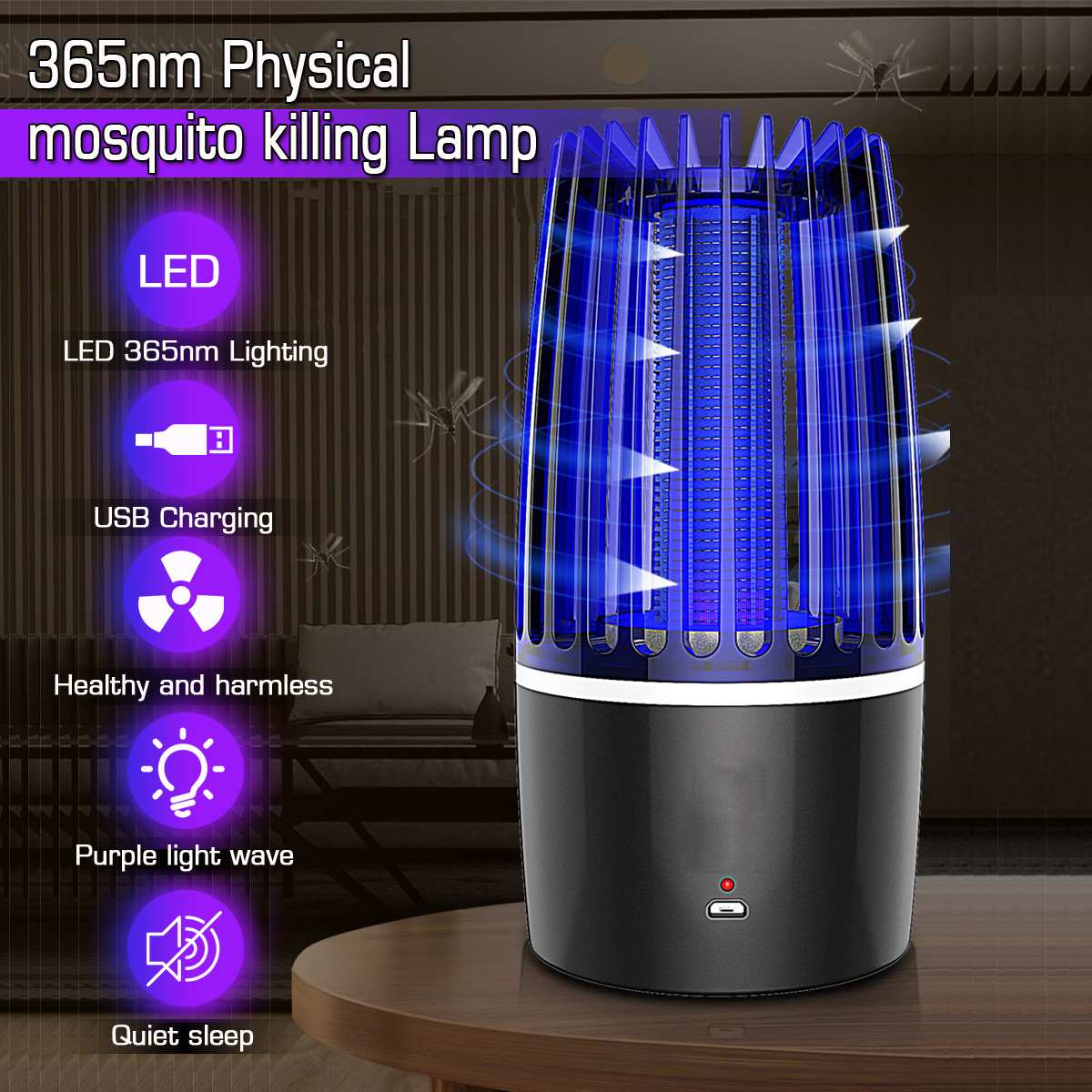This post contains affiliate links and as an Amazon Associate, Alpha and Omega Outdoors may earn from qualifying purchases.
The world of fly fishing can be an intimidating place to get one’s bearings. The price tag on a lot of the gear alone is enough to keep many would-be anglers from ever getting started, which is a real shame. A lot of us got our start with hand-me-down rods and reels. That can be a great option—especially if it comes with some sage advice from a more experienced friend or family member—but there’s still something special about picking out your own, brand-new fly fishing rod and reel for the first time. That is why I have put together this Best Entry Level Fly Rod And Reel list for your reference.
A Brief List Of The Best Entry Level Fly Rod And Reels We Reviewed
| Editor’s Choice: Orvis Encounter Fly Rod Outfit | Check Price On Amazon Here |
| Upgrade Choice: Orvis Clearwater | Check Price On Amazon Here |
| Budget Choice: Wild Water Fly Fishing Kit | Check Price On Amazon Here |
| Honorable Mention: Redington Crosswater Combo | Check Price On Amazon Here |
Table of Contents
- How Do I Choose A Beginner Fly Rod
- Benefits Of Buying A Beginner Fly Rod Combo
- How Much Should You Pay For A Fly Rod
- Best Entry Level Fly Rod And Reel Reviews
- Tips For Getting Started In Fly Fishing
- How To Use A Fly Rod And Reel: A Beginner’s Guide
- Final Thoughts – Best Budget Fly Rods
- Frequently Asked Questions – Best Budget Fly Rods
How Do I Choose A Beginner Fly Rod
When it comes to choosing a beginner fly rod, there are a few things you need to keep in mind.
Type Of Fish You Are Targeting
The type of fish you are targeting will play a big role in choosing the right beginner fly rod. If you are targeting smaller fish, then you will want to go with a lighter rod. If you are targeting larger fish, then you need to choose a heavier rod.
Fly Rod Weight Or Action
A 4 or 5 weight rod is a good all-around choice for beginners, as it will be able to effectively cast a wide variety of flies and still have enough power in reserve for fighting larger fish.
Also keep in mind that there is such a thing as “too fast”, so you need to make sure the rod has at least some flex, or action, to it. A stiffer rod can put stress on your wrist, and may result in you losing control of the rod.
Comfort Of A Fly Rod Combo
It’s also important to choose a rod that’s comfortable for you to use and easy to control. If you’re not comfortable with the way a rod feels in your hand, you’re not going to want to use it, and you’re not going to catch any fish.
Quality Of A Fly Rod Combo
Of course, you also want to make sure that the rod and reel combos you choose are of good quality. It’s important to invest in a quality rod and reel combo if you want it to last, and if you want to have a good time fly fishing. Look for models that feature a lightweight design and are made from quality materials, such as graphite or fiberglass.
Price And Warranty
When it comes to choosing a beginner fly rod, you should also consider price and any warranty information that is available. A lower-priced rod might not offer as high a quality construction or as many features as a more expensive one, but it can be a good option for those on a tight budget.
Choosing the best beginner fly rod is all about finding the right balance between price and quality, so do your research and find one that fits your needs. Best of luck!
Benefits Of Buying A Beginner Fly Rod Combo
The main benefit of getting a fly rod combo is that it comes with a reel. Of course, you can purchase them separately. If you’re just starting out, it’s probably best to get a combo so you don’t have to worry about matching the components yourself.
Additionally, a fly rod combo usually comes with some sort of warranty that ensures you’re covered in case any parts are defective. This can give you peace of mind when making your purchase.
Another benefit of purchasing a beginner fly rod is that it will be an investment in your fishing success. A high-quality and well-designed fly rod can last you for many years, so it’s important to choose one that will offer you the best chance for success.
Lastly, a good beginner fly rod combo can save you money in the long run. When you purchase a quality product, you won’t have to replace it as often, which can save you money over time.
How Much Should You Pay For A Fly Rod
This depends on your budget and what you’re looking for in a fly rod. If you’re just starting out, you can get a decent entry-level rod for under $200, but you may find that you want to upgrade in the future as your skills and experience grow.
Fortunately, it is possible to get a truly excellent entry level fly fishing rod and reel combo that won’t put you in the poorhouse. Choosing a fly rod and reel can be tricky, but this guide will help you sort through the jargon and find the perfect setup for your budget, fishing style, and dream fish.
Best Entry Level Fly Rod And Reel Reviews
These fly fishing combos for beginners are all versatile and easy to use. They’re perfect for practicing your casting and honing your fly fishing techniques in a wide range of scenarios. Best of all, there are choices to fit any budget. If you’re on the market for your first entry level fly rod and reel, these four options are all worth considering.
Orvis Encounter Fly Rod Outfit
You’d have a hard time finding a higher quality fly rod and reel combo in the Orvis Encounter 5-Weight 8’6″ Fly Rod Outfit’s price range. It’s perfect for beginners who are just learning how to cast a fly rod, and plenty of more experienced anglers continue to use this versatile combo long after they’ve honed their skills.
The Orvis Encounter Kit is an 8’6″-foot, four-piece, 5-weight fly rod with medium-fast action. That makes it versatile enough to use in a wide range of situations, which is a must for beginners. It’s a sturdy graphite rod with a supple tip and handsome finish. The complete kit also includes an Encounter reel, weight-forward floating line, backing, and leader.
This combo really excels at casting larger flies like streamers, poppers and nymph rigs. It also gives you solid power and casting distance, although you may find that accuracy becomes a little more challenging on long casts. The Orvis Encounter Kit is inexpensive, but doesn’t feel cheap, and can hold its own against fly rods that cost three times as much.
Pros:
- Excellent quality for the money
- Great for learning how to cast
- Versatile 5-weight rod
- Travel-friendly four piece design
- Includes fly rod, reel, backing and line
Cons:
- Limited accuracy on long (greater than 50-foot) casts
- Plastic reel that could be better quality
Orvis Clearwater Fly Rod Outfit
There’s no doubt that the Orvis Clearwater fly rod outfit belongs to the upper echelon of entry level combos. It’s a superbly well-crafted rod and reel that comes with Orvis’ outstanding 25-year warranty. It costs a little more than your average beginner setup, but it’s still incredible quality for the money.
The 9-foot, 5-weight Clearwater rod gives you the perfect balance of power and sensitivity, and it’s great for long, accurate casts. You may find that the stiffness of the rod makes in-close fishing challenging, but that’s a trade-off that comes with excellent performance at greater distances. It comes with a perfectly matched Clearwater reel, which is made of aluminum (a significant upgrade from the resin/composite reels that come with most entry level fly rods).
The Orvis Clearwater is perfect for beginners who are looking to upgrade into “novice” territory, but it’s also a great choice for the absolute newbie who has the budget for a high quality combo right out of the gate. It’s hard to find fault with the Clearwater, but some may dock it a point for not having a hook-keep in the design. The four-piece rod breaks down nicely for travel without losing any of its sensitivity, and it comes with a very high quality protective case.
Pros:
- Smooth, accurate casting
- Reliable performance in a variety of situations
- Excellent engineering and craftsmanship
- Medium action rod is easy to learn on
- Real cork grip
- High quality Clearwater reel made of cast aluminum
- Excellent warranty
Cons:
- More expensive for a “beginner” fly rod
- No hook-keep
- Doesn’t excel at fishing close (within 25 feet).
Wild Water Standard Fly Fishing Starter Package
If you’re looking for a complete all-in-one fly fishing starter kit, this combo from Wild Water is tough to beat. In addition to a 5/6-weight, 9-foot fly rod and 85mm diameter spool fly reel, the Wild Water Fly Fishing Kit includes a fly box and a selection of nine flies, spare leader, line trimmer and carrying case. The reel comes pre-spooled with backing, weight-forward floating line and a leader.
The rod is officially considered medium-fast action, but feels closer to medium in the hand (medium rods bend a little farther back from the tip than medium-fast). This makes it good for learning to cast. It’s a pretty forgiving rod, and great for practicing accuracy and making short casts. It’s best suited for smaller streams; this rod lacks a bit of power when it comes to longer casts. The reel is smooth, with adjustable disc drag that gives you easy control, especially with a fish on the line.
It almost goes without saying that more advanced fly fishermen may not find this kit up to their standards. It’s well built, but not the type of rod and reel that will last a lifetime.The Wild Water Fly Fishing Kit is a great, budget-friendly starting point for beginners who want to learn to fly fish before eventually upgrading to a more high-end rod and reel.
Pros:
- Great value
- Complete kit includes everything you need to get started
- Solid entry level rod & reel for learning
- Good casting accuracy and control at short distances
Cons:
- Lacks power for long casts
- Questions about durability
- Some users have complained of reel grinding
Redington Crosswater Fly Fishing Outfit
Redington makes quality fly rods in every price range, but their Crosswater Combo offers arguably the best bang for your buck in an entry level rod and reel. It’s a good looking combo too, with an eye-catching blue finish and handy alignment dots on each of the rod’s four segments, making it easy to assemble quickly.
Unlike a lot of beginners’ combos, the Redington Crosswater comes in multiple weights, so you can choose the right rod for your specific needs. If you’re just starting out and plan on chasing trout or bass on your local river, the 4 and 5 weight rods are ideal, but the Crosswater is available all the way up to 9 weight. These 4 and 5 weight rods are both 9-foot with medium-fast action. They’re smooth and comfortable to cast, and great for working on your technique.
The main thing that holds the Redington Crosswater Combo back is the reel, which is made from “durable polymer” and gives itself away as being a lower-end reel. This isn’t to say it’s a piece of junk—it has easily adjustable drag and will be perfectly adequate for beginners and novice fly anglers—but you may eventually decide to upgrade the reel, even if you like the rod. The combo also comes with a good-not-great one-year warranty.
Pros:
- Ability to choose your ideal rod weight
- Stylish design and finish
- Good medium-fast action for practicing casting and technique
- Great value in its price range
- Reel is pre-spooled with line and matched to the rod
Cons:
- Reel not as high quality as the rod
- Less-than-stellar warranty
Tips For Getting Started In Fly Fishing
Here are a few tips to help you get started in fly fishing:
Start with an entry level rod and reel: There is no need to spend a lot of money on gear when you are just starting out. You can find good quality, entry level gear at your local sporting goods store or online.
Take a class: Take a fly fishing class or seek out a local fishing club. Many experienced anglers are happy to share their knowledge and tips with newcomers to the sport.
Practice: Practice your casting technique as often as possible, both on land and in water. This will help you become more comfortable with your gear and improve your casting skills over time.
Be patient and persistent when you are out on the water. Learning to fly fish takes time and practice, but it is well worth the effort!
How To Use A Fly Rod And Reel: A Beginner’s Guide
Now that you know a little bit about what to look for in a fly rod and reel, it’s time to learn how to use them. This beginner’s guide will teach you the basics of how to cast a fly rod and reel, what type of flies to use, and how to fight and land a fish.
Casting a Fly Rod and Reel
The first thing you need to know is how to cast a fly rod and reel. This may seem like a daunting task, but it’s actually not that difficult once you get the hang of it. There are two main types of casts:
The Overhead Cast
- To perform an overhead cast, hold your rod with one hand at its base, with your index finger resting above the trigger on the reel.
- You should be holding the rod parallel to the ground, or slightly angled upwards. With your free hand, grip the line about a foot above your reel, and begin casting by moving your rod hand in a smooth, sweeping motion.
- As you do this, allow the line to travel through your free hand and off of the reel.
- The faster you move your rod, the further the line will travel.
- To stop the line from traveling any further, simply release the line from your free hand.
The Roll Cast
The roll cast is a bit more difficult to master, but it’s essential for anglers who are fishing in tight spaces (like from the bank of a river) or in windy conditions.
- To perform a roll cast, start by holding your rod with one hand at its base and your index finger above the trigger on the reel, as you would with an overhead cast.
- Then, bring your rod hand a few inches forward and turn the tip of your rod downward, pointing it at the water’s surface.
- Next, pull back in a quick snap on the line that is hanging from your reel, so that it forms a tight loop.
- With your free hand, grip the line about a foot above your reel and release it from your hand, allowing the line to move through your fingers and off of the reel.
- As with an overhead cast, you can control how far the line travels by moving your rod quickly or slowly.
What Kinds of Flies Should I Use?
There are many different types of flies that you can use while fly fishing. The main thing to consider is the type of fish you are targeting, as different types of flies will be more effective depending on your prey. Here are some common types of flies and what they’re used for:
Baitfish patterns: Baitfish patterns are designed to mimic small fish, which many larger predatory fish feed on. These patterns can be effective for a variety of fish, including bass, trout, and pike.
Insect patterns: Insect patterns are designed to mimic the appearance of insects that fish feed on. Common insect patterns include mayflies, caddisflies, and stoneflies. These types of flies can be effective for a variety of fish, including trout and panfish.
Streamer patterns: Streamer patterns are designed to mimic the appearance of small fish or baitfish. These types of flies are often used to target larger predators, such as bass and pike.
How to Fight and Land a Fish
Once you’ve hooked a fish, it’s time to start fighting it.
- The first thing you need to do is reel in any slack line, so that the fish feels the pressure of the hook.
- Next, point your rodtip at the fish and begin reeling in, using a smooth and consistent motion.
- As you’re reeling, keep the rod tip high, so that there is tension on the line. This will make it easier for you to control the fish and prevent it from swimming deeper or away.
- When the fish begins to tire out, bring your rod low so that it is parallel to the water’s surface. This will keep tension on the line and help you pull your catch in.
- Keep reeling until you can safely remove the hook from the fish’s mouth and release it back into the water.
How To Use A Fly Rod And Reel: Conclusion
Fly fishing is a great hobby that can be enjoyed by people of all ages. It’s a great way to get outside and enjoy nature, and it can be very rewarding when you catch a fish. While it may seem daunting at first, learning to use a fly rod and reel is not difficult, especially with the right guidance. By following the tips in this guide, you will be on your way to mastering this exciting sport. Best of luck!
Final Thoughts – Best Budget Fly Rods
Choosing the best entry level fly rod and reel doesn’t have to be complicated or expensive. Any of the combos on our list will give you a great foundation for learning to fly fish, and won’t break the bank in the process. And while we think all of these combos would make great fly fishing combos for beginner anglers, our top pick for the Best Entry Level Fly Rod And Reel goes to the Echo Base Kit rod and reel combo. It’s a great all-around combo that strikes the perfect balance between price and quality, and comes with everything you need to get started. Happy fishing!
Frequently Asked Questions – Best Budget Fly Rods
Are cheap fly rods worth it?
While it depends a bit on what you consider “cheap,” in general, there are many quality budget fly rods available at affordable prices. If you’re just starting out and want to learn the basics of fly fishing, it’s probably best to go with a budget-friendly option like the Echo Base Kit or the Wild Water Fly Fishing Kit. Once you’ve mastered the basics and know what you’re looking for in a fly rod, you can upgrade to a more expensive model.
What is a good weight of fly rod for beginner?
A 4 or 5 weight fly rod is a good starting point for beginners. These rods are versatile and can be used for trout fishing to bass fishing. As you become more experienced, you may want to try a heavier rod for longer casts and larger fish.
What is a good cheap fly rod?
A good budget fly rod for beginners is the Redington Crosswater Combo. This rod and reel combo is stylish, easy to use, and great value for the price.
What is the best fly fishing rod for the money?
The best fly fishing rod for the money is the Orvis clearwater fly rod. This high-end fly rod is built with quality materials and construction, and is designed to deliver exceptional performance. It’s also very well-reviewed by users, making it a top choice for experienced anglers.
What size fly rod is best for beginners?
A 4 or 5 weight fly rod is a good size for beginners. These rods are versatile and can be used for trout fishing to bass fishing. As you become more experienced, you may want to try a heavier rod for longer casts and larger fish.
What is a 5 weight fly rod good for?
A 5 weight fly rod is a versatile option that can be used for a variety of fish, from trout to bass. These rods are also good for beginners because they are relatively easy to use. As you become more experienced, you may want to try a heavier rod for longer casts and larger fish.
What is a good beginner fly fishing combo?
One of the best beginner fly reel combos is the Echo Base Kit. This rod and reel combo is stylish, easy to use, and great value for the price. It comes pre-spooled with line and is matched to the included rod. So, it’s perfect for beginners who want to get started right away with their fly fishing adventures.
What kind of fly reel do I need?
There is no one-size-fits-all answer to this question, as different reels are designed for different purposes. When choosing a fly reel, you’ll need to consider the type of fish you’ll be targeting, the weight of your rod, and the line capacity you’ll need.
What size fly reel is best for trout?
A 5-6 weight fly reel is best for trout. It will be able to handle the smaller size of these fish without too much drag. You may also want to consider a reel with an adjustable drag, as this will allow you to fine-tune the resistance for accurate casting.
Does an expensive fly rod make a difference?
An expensive fly rod can make a difference in terms of performance, but it’s not necessarily a requirement for success. There are many quality, inexpensive fly rods available.
Is a high end fly rod worth it?
A high-end fly rod can be worth it if you’re looking for the best possible performance. These rods are usually made with quality materials and construction. In addition, they are designed to deliver exceptional performance. However, they can be quite expensive, so it’s important to consider whether you need the extra features and benefits that come with a high-end rod.
Are longer fly rods better?
Longer fly fishing rods can be better for casting, as they provide more leverage and power. They can also be helpful for fishing in tight spots, such as in brushy areas or around trees. However, longer rods can be more difficult to control, so it’s important to consider your skill level before choosing a longer rod.
Are bamboo fly rods better?
Bamboo fly rods are considered to be the best performing rods available, but they are also very expensive. If you’re looking for a high-end rod, bamboo may be worth the investment. However, if you’re just starting out, there are many quality fly fishing rods available at more affordable prices.
What kind of fly rod should I get?
The best fly rod for your needs will depend on a number of factors, including the type of fish you’ll be targeting, your skill level, and the type of water you’ll be fishing in. As a general rule, lighter rods are good for smaller fish and tight spots, while heavier rods are better for longer casts and larger fish. Experienced anglers may want to consider a high-end rod for the best possible performance.
Featured Photo by Carl Heyerdahl on Unsplash





